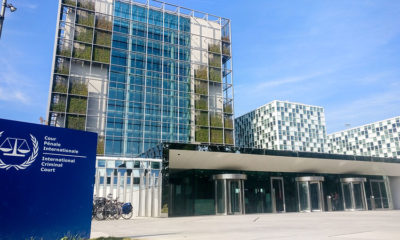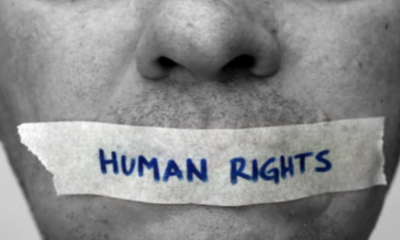Legal
Demystifying Abortion in Kenya

This right of privacy is broad enough to encompass a woman’s decision whether or not to terminate her pregnancy. The detriment that the State would impose upon the pregnant woman by denying this choice altogether is apparent. – Roe V Wade.
Abortion is recognized as an emotive, sensitive and divisive issue. It is an issue that evokes very strong feelings, judgments and heated recriminations.Specifically, one of the main focus points on the abortion debate is on the issue of rights. Whether a woman’s right to procure an abortion outweighs a foetus’s right to life. In this heated debate, there is the pro-choice movement that contends that a woman’s right is absolute and the pro-life movement that asserts that a foetus’s right to life is undisputable. Following the decision in the American Supreme Court case of Roe v Wade, abortion has persistently remained a controversial issue in today‘s society. Notably, the case brought women far greater control over reproduction than was previously known. Feminists in the United States viewed the case as an enormous victory.
Suffice it to say that abortion seems to be at the centre of cultural wars in both industrialized societies as well as agricultural societies. Despite the numerous changes that have occurred in the society, people tend to be more willing to accept two men kissing in public as was the case in Obergefell v Hodges than a woman procuring an abortion and announcing it to the world. Despite abortions being restricted in Kenya, induced abortion remains common. In Kenya it is estimated that 300,000 abortions occur annually. About 29 abortions of every 100 live births. It is against this backdrop that pro-life and pro-choice movements are often fighting for what each side believes to be the correct position with regard to the abortion dilemma.
This controversy is exacerbated by the inconsistency that exists in Kenya‘s legal framework on abortion.Undoubtedly, the right to life is guaranteed in the Constitution of Kenya, 2010 in very precise terms. Indeed, it begins with affirming this right and proceeds to acknowledge that life begins at conception.This article further prohibits arbitrary deprivation of life. More so, abortion is expressly prohibited unless in the opinion of a trained health professional, there is need for emergencytreatment.
It is precisely for this reason that this research paper interrogates whether the Constitution of Kenya, 2010 has sanctioned a woman’s right to procure an abortion. Moreover, it evaluatespro- life and pro-choice arguments, cases of women imprisoned for abortion and cases where abortion was allowed by a medical officer who certified that the woman’s life was in danger and thus necessary to terminate the pregnancy. The Kenyan law seems to adopt a pro-life approach. Nevertheless, some people want abortion to be introduced as a new humanright.
Pro-life Argument
In Kenya, pro-life proponents assert that abortion is murder. They posit that a foetus is a human being and killing potential people is not only wrong but also illegal.Additionally, they argue on foetal rights and contend that since they are potential human beings, then they have human rights too. The debatable issue concerns the time human life commences. Pro-life supporters argue that life begins at conception since the foetus fulfils the criteria of metabolism, growth, reaction to stimuli and reproduction.Further, they argue abortion endangers women’s health, thus connecting abortion with psychological illnesses and even breast cancer.
In the case of R v John Nyamu & 2 others, Dr. Nyamua gynecologist and 2 others were charged with murder contrary to Section 203 and Section 204 of the Penal Code. The accused persons were alleged to have jointly murdered an unintended female person number 1912 weighing 3012 grams and a male person number 1913 weighing 2232 grams. The court held that contrary to Section 214 of the Penal Code, the supposedly aborted foetuses in question were “born dead” and therefore were not capable of being killed. The issue for determination was whether they were guilty or not. In her assessment Judge Rawal held that there was no evidence to prove murder. The accused were therefore acquitted.
In such a scenario, this research paper opines that for a child to become a person, the most important ingredient is when it has completely proceeded in a living state from the body of its mother, without that, the fetus was not a person capable of being killed. This decision could be held to be wrong by pro-life proponents from the reading of Article 27(2) of the Constitution of Kenya, 2010 which provides that every person is equal before the law and has equal protection in law. Similarly, pro-life approach proponents acknowledge that the Penal Code expressly provides for criminal sanctions that prohibits interference of the pregnancy under Sections 158, Section 159and Section160. Akin to this is that this written law protects the foetus and treats it as a person.Admittedly, this prohibition reflects the wider society’s view as outlined in the Constitution.
Criticism to Roe v Wade Decision
In particular, Justice Rehnquist spelled out his reasons for dissent by challenging the idea contained in the majority decision that the right to choose whether to end a pregnancy was a ‘fundamental right.’He based this judgement on that fact that a majority of states had restrictions on abortion for over a century, therefore this was a majority sentiment and it was dubious to suggest that the right was fundamental. Some pro-life proponents are of the view that the Court overstepped the line in constitutional interpretation and its reasoning process were more like the policy decisions normally made by the legislature than judicial decisionmaking.
The decision is one that required a bold interpretation of the intentions of the original drafters of the Constitution, and an effective removal of a state’s right to legislate for its citizen’s views in this area.Also, Justice White’s assertion that there is nothing in Constitution to support the Court’s judgement is not an unreasonable argument to make. Nowhere in the Constitution is there any mention of a woman’s right to choose if she can terminate her pregnancy. In addition, the idea that some rights which are as divisive, such as the right of a woman to terminate a pregnancy are fundamental rights and cannot be legislated upon; does in some ways go against the concept of representative democracy and the rights of states to legislate for its own citizen’s viewpoints.
From the foregoing, it is evident that unsafe abortion thrives in Kenya and other countries with restrictive abortion laws as a way of bypassing legal obstacles thereby being done clandestinely. The practice poses severe health and legal risks to those involved. Understandably, the life of the unborn child is a human rights issue and should thus not be narrowly regarded as a mere medical issue. It follows, therefore, that the abortion procedure contravenes the principle of proportionality. It is a trite principle of law that whenever human rights surround any matter, the test of proportionality should apply. Proportionality requires not only a balance to be struck beyond mere rationality or reasonableness, but also to accord relative weight to interests and considerations.
The right to life far outweighs the right to health in inviolability and non-derogation. Pursuant to human rights law, therefore, it is unsound and unsafe to violate a human right for the interest of a medical welfare. Moreover, arbitrary abortion contravenes public morality in Kenya and thus contrary to public interest. It is worth mentioning that even the smallest member of the human family deserves the full protection of its human rights, equally to the rights of a pregnant woman. Therefore, each pre-born child must be granted equal rights and equal protection compared to all other humans, by the same laws, reasons, exceptions and consequences.
Pro Choice Arguments
Basically, pro-choice argument envisages that women should be in control of their body.Likewise, everyone possesses the right to their own body. This is the right to bodily autonomy.
This means that no one should mandate how it should be treated. Hence, women have the right to decide what to do with their bodies and anybody with a contrary opinion would be violating their freedom of personal choice. In one sense, pro-choice supporters argue that abortion is vital for gender equality. This research paper is of the view that with free access to abortion, women will be able to achieve social, economic and political equality. Undoubtedly, pro-choice advocates see abortion as a civil liberties issue.
Therefore, the government cannot infringe upon that right. Their argument is that if women do not have the right to decide on abortion, then their civil liberties are being violated and consequently they are not equal to men.
Essentially, another argument is that banning abortion risks women’s health since that would lead them to seek alternative and illegal practices of abortion that could have dangerous implications, including even death. Some claim that the new human being appears only at birth, and before that time point it is nothing more than a part of the woman’s body. Others admit that the unborn child might have a partial claim to humanity and some rights, but in certain circumstances such as rape or incest an abortion is allowable.In such cases the rights of the pregnant woman are regarded as superior and trump the rights of the child. The pregnant woman may claim for social and health support for an abortion procedure that is legal and therefore regarded as being safe.
In the case of Paton v British Pregnancy Advisory Service Trustee,Paton wrote an application to stop BPAST and his estranged wife whom they had separated from procuring an abortion. The wife was 1 month pregnant and had contacted BPAST for abortion facilities. Paton sought an injunction to stop the abortion of his child. There were two issues for determination: Rights of an unborn child to life and Paton’s right to fatherhood in relation to unborn child. The case was dismissed and the court held that under British law, there can be no fatherhood, personhood or childhood unless there is a life birth. The court noted further that the unborn child had no legal recognition and therefore there was no basis for stopping BPAST. Paton appealed to the European commission on Human Rights. The commission dismissed the case noting that the state of unborn child was not addressed and that there was no consensus on how to regard personhood or childhood. However, the commission noted that the national law was not consistent with the European Convention on Human Rights.
In another case of Re F (In Utero) similarly the local authorities alerted the court that a woman who was in her final month of pregnancy was mentally unstable and had suicidal tendencies. She had an only child whom she abused frequently and had been taken under custody. The appeal laid by local authority to the High Court was to take the lady to custody to protect the unborn child.The court cited the Paton’s case and held that a child could not be protected unless there was life birth. The court had no jurisdiction to protect the unborn child no matter how advanced the pregnancy was.However, this research paper contends that the Universal Declaration of Human Rights emphasizes the fact that “All human beings are born free and equal in dignity and rights”. In this statement the word “born” is used intentionally in order to support that human life begins at birth.
Admittedly, in the case of pregnancy as a result of rape, pro-choice proponents argue that the foetus has no right to use the woman’s body. In such a case at least, abortion is not a violation of the right to life of the foetus, because the right to life is the right not to be killed unjustly, and such a killing is not an unjust killing. This research paper proceeds from the premise that on one hand there exists the opinion that abortion is mainly an issue of the pregnant women, with the conclusion that the freedom and privacy of the woman as well as her well being, health and security must be granted. As illegal abortions are suspected to be unsafe to women, it is required to remove all legal restrictions on abortions. This is owing to the fact that prohibition of abortion is compared with torture.
Analysis of Roe V Wade
The Supreme Court decision in Roe V Wade, legalized abortion in the United States ofAmerica in 1973. Despite the importance of this decision, over the years the conservatives with a handful of arguments either on ethical or religious grounds tried to attack the constitutionality of abortion rights. They have also tried to overturn the ruling by promoting several bills and court decisions as state laws. This means that despite the legality of abortion on a federal level there is a large number of restrictions in every state separately.In this case, the American judiciary has been reiterating the inherent right of a woman as a constitutional person, to terminate her pregnancy in the earlier stages and thereafter giving the State a role to play, hence making abortion legal.
The background to this case stemmed from the fact that the Texas Statute at the time criminalized and outlawed abortion except in cases where it was deemed necessary on medical advice to save the life of the pregnant woman. In 1969 Jane Roe (pseudonym), the appellant in the case was a twenty-five year old unmarried woman who untruly claimed that she had been raped as she walked home from work and had become pregnant as a result as she thought it would give her stronger grounds for an abortion. Although unable to procure an abortion for herself due to a lack of resources to travel, she was encouraged to challenge Texas law so that other women may not be in her position in the future. The case was taken by Roe “on behalf of herself and all other women similarly situated” and challenged the Texas law based on her rights as protected by the constitution.
In writing the majority decision, Justice Blackmun wrote that a woman’s right to choose whether or not to terminate her pregnancy is a ‘fundamental right’ which fell under the right to privacy. The Blackmun opinion also suggested that it was not the Court’s business to decide when life begins and outlined at rimester framework for weighing up the rights of the woman and the state’s interests in intervening. The Court’s opinion sets out that during the first trimester, the women has in conjunction with a qualified physician complete autonomy over her pregnancy. During the second trimester, states could regulate abortion in reasonable ways that related to the health of the woman and in the third trimester, states could regulate or prohibit abortion except in cases where the mother’s life was in danger. In holding that the right to abortion was not absolute, the Court also struck a balance in holding that a state of local government could not circumvent a woman’s rights “by adopting one theory of life” that begins atconception.
In another case, Doe v Bolton, the Court, by a 7-2 vote, ruled that the right to privacy extended to a woman‘s decision to have an abortion, but that right must be balanced against the State‘stwo legitimate interests in regulating abortions: protecting prenatal life and protecting women‘s health. Arguing that these interests became stronger over the course of a pregnancy, the Court resolved this balancing test by tying State regulation of abortion to the trimester of pregnancy.The trimester frame work was later rejected by the Court while affirming Roe’s central holding that a person has a right to abortion until viability.
Sanctioning Abortion
Although a number of legal authorities and professional and government-issued guidelines interpret Kenya’s abortion law to permit abortion to preserve a woman’s life and health and in cases of rape, the law remains unclear, with varied interpretations abounding.In addition, sections 211 and 240 of the Penal Code have not been harmonized to reflect the spirit of Article 26 (2) of the Constitution on when life begins. The inconsistency arising from these provisions imply that the unborn child is not adequately protected under the Kenya‘s law.
It is worth pointing out that the law on abortion also seems inconsistent insofar as the good faith and reasonable care threshold sunder section 240 of the Penal Code have not been aligned with the opinion of a trained health professional clause under the Constitution. As a result, this leads to varied interpretations of the law, leaving many doctors and members of the public unsure of its content. From the wording of Article 26(4), it is the opinion of the trained health professional that shall inform whether or not abortion should be carried out. The Penal Code can be read as creating a lawful exception when a surgical operation upon an unborn child is performed in good faith and with reasonable care for the preservation of the life of the mother. However, the section offers no explanation as to what circumstances may constitute the preservation of the mother‘s life.
There is also no post-independence Kenyan case that interprets this provision to clarify the content of this exception. Article 26 (4) of the Constitution allows abortion where, in the opinion of a trained health professional, there is need for emergency treatment or the life of the mother is in danger or if permitted by any other law. The Kenyan law also does not define what constitutes emergency treatment or danger to the life or health of the mother and regulations to contain abortions on demand. Some medical providers understand the law solely in light of the Constitution and the Penal Code and their personal understanding of what constitutes the exceptions entrenched therein.The Kenyan law does not expressly provide for rape as a ground for abortion.
Since the country’s independence in 1963, the Kenyan High Court has not addressed the applicability of Bourne or further interpreted or defined the content of the “preservation of the mother’s life” provision in the Penal Code. However, as Kenya has retained its colonial law on abortion, a persuasive argument could be made for its continuing validity as binding precedent. In Johnson Jefa Kalama v Republic, the accused was charged jointly with another with the offence of conspiracy to commit a felony contrary to section 393 of the Penal Code in that on 30th September 2004 together they conspired to procure miscarriage on a woman. They faced a second charge of attempt to procure abortion contrary to section 158 of the Penal Code. On 17th February 2011, the High Court at Malindi upheld theconviction.
Restrictive abortion laws are not very effective in achieving their purported goal-stoppingwomen from obtaining abortion. Evidence from around the world shows that abortion happens at about the same rate in regions where it is highly restricted and where it is broadly legal. The key difference is safety. In 1938, Rex v. Bourne, the first case that addressed the grounds upon which an abortion could legally be provided under British law, was decided. At the time, British law on abortion was very similar to sections 158–160 of Kenya’s current Penal Code. The case was brought against a doctor who had performed an abortion on a young girl who had been raped.
In Bourne, the House of Lords interpreted existing legislation to mean that one could “lawfully” procure a miscarriage if done “in good faith for the purpose only of preserving the life of the mother. The court held that “if the doctor is of the opinion, on reasonable grounds and with adequate knowledge, that the probable consequence of the continuance of the pregnancy will be to make the woman a physical or mental wreck, ”then this constitutes acting in preservation of the life of the woman and is lawful.
In essence, Bourne created a mental and physical health exception to the criminalization of abortion in the United Kingdom.
In Republic v Fred Onyango Orimba, the accused was charged with the offense of murder contrary to section 204 of the Penal Code. A pregnant woman died whilst in his clinic and the post mortem results concluded that she died of excessive bleeding due to an incomplete abortion. The court, however, argued that the prosecution failed to establish connection between the death and acts of the accused and therefore acquitted the accused. The issue of establishing nexus between the abortion and the accused has been addressed in Migori Criminal Case No. 44 of 2014 where the accused with the offense of murder contrary to s. 240 read with S. 158 of the Penal Code. In the case a pregnant woman died whilst procuring an abortion. On 17th July 2015, the Court held that the prosecution must establish a connection between the act of the abortion and the accused having performed it for a conviction to stand. It had failed to do so and the accused was acquitted.
In a nutshell, case law in Kenya demonstrates that whereas the constitution may provide lee way for a woman to procure an abortion, it is still a criminal offence to do so and if a woman dies in the process, the abortionist may be convicted of murder. In addition, there is no clear indication as to who a trained health professional is under the Constitution. The law assumes that any woman who intends to carry out an abortion understands and is able to identify a trained health professional. As a result many who are approached are largely medical quacks operating illegal clinics or chemists.
This research paper argues that Kenya‘s abortion law is inconsistent and widens the latitude for abortion on various levels. Firstly neither statute nor case law adequately addresses the Natural Law and in particular the Dworkinian approach to the rights of the child as a rights holder/claim bearer with relation to the mother as the duty bearer and the state as the enforcer of such duty. Secondly, the link age to right of life of the unborn child vis-a-vis right to choose by a woman is at best weak,ill-explained and often appears to pit one against the other. This is demonstrated by the inconsistent outcomes in the Kenyan case laws. The rationale and value of child‘s right to life both in line with international instruments and the Constitution is inadequately articulated.
The resultant effect is that both statute and case law fail to sufficiently interrogate consequences of abortions, options available to abortion as well as mechanisms of enforcement. Thirdly, threshold of the opinion of a trained health practitioner’s not defined. This implies that any opinion at all is admissible as a ground to recommend an abortion. This negates the constitutional safeguards on protection of right to life. Fourthly qualifications of the said medical practitioners are not defined. Thus any person purporting to be a trained health professional can lay claim to expertise on matters so grave as to life and death. The resultant effect has been proliferation of botched abortion cases and numerous deaths of women. Fifthly, the Kenyan law lacks conscientious objection clause, which, as noted, protects doctors who are not willing to perform anabortion.
Conclusion
The controversy of abortion in Kenya cannot be divorced from a right-to-life discourse. Despite the current legal limitations in Kenya, the right to life is profound and any decision to take it away ought to be in accordance with rules of justice and fair play. Put differently, a decision cannot pursue a wrong, even if this wrong is partly or fully permitted by law in consideration of its necessity. Besides, it can be rightly concluded that, from the foregoing review, none of the Kenyan authors has delved into the adequacy of Article 26(4) of the Constitution of Kenya vis-à-vis the other abortion laws. Further, some of the authors take a philosophical or moralistic stand of the right to life and the status of the foetus.
Legal
Is unjust enrichment really concerned with enrichments?
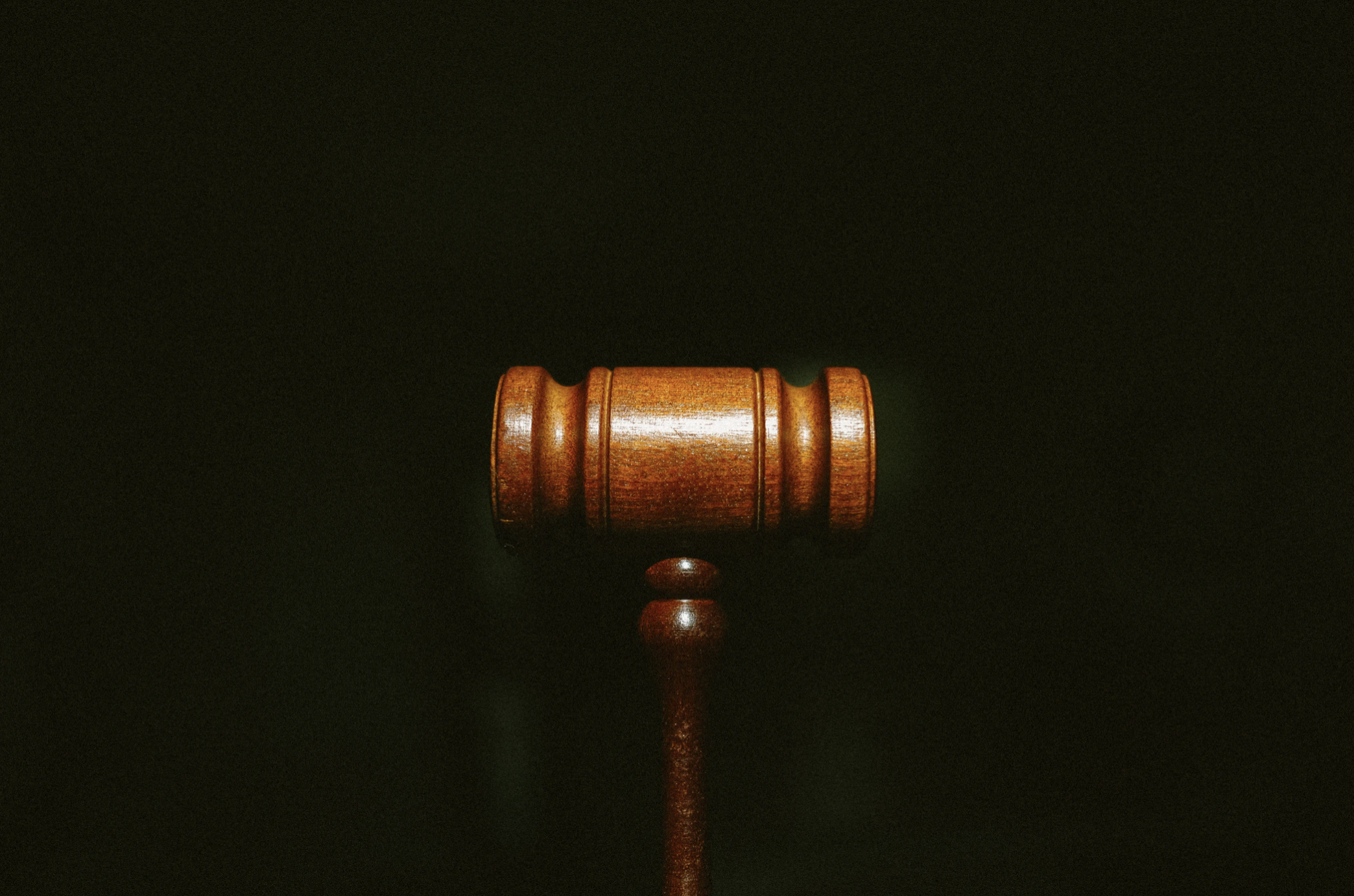
This article argues that the law of unjust enrichment is not actually concerned with the defendant’s enrichment, in the sense of them being ‘better off’. It will cite five examples of law showing that it does not reverse betterment. Instead, the law reverses receipt of money or services. Whether or not the defendant is better off by the receipt is irrelevant. Finally, this argument is not merely semantic. It tells us that FII (UKSC 3) is wrong on principle, precedent and policy.
Convention tells us to apply the Birksian fourfold formula to establish a claim in unjust enrichment. One of the questions we ask is whether the defendant was enriched. In ITC v HMRC [2017] UKSC 29, Lord Reed famously said that these are merely ‘broad headings for ease of exposition’, so it is not to be read like the ‘words of a statute’. We can accept this but still prefer English words that better capture what the law is doing. In English, to be enriched is to be ‘better off’ (Merriam-Webster, Oxford etc). We take a ‘straightforward economic approach’ (Peter v Beblow [1993] 1 SCR 980 (McLachlin J)). However, this article will argue that, as a matter of positive law, the claimant need not show the defendant was better off. The language of ‘better off’ is at once both over- and under-inclusive. It cannot explain the cases. Receipt can. It is therefore better to speak of unjust receipts instead of unjust enrichments.
(i) History.
In the first place, how did ‘enrichment’ take hold as the legal language? There are two possible reasons. Firstly, it may have something to do with what Birks thought the ‘core case’ of unjust ‘enrichment’ was: mistaken payments. ‘Money has the peculiar character of a universal medium of exchange. By its receipt, the recipient is inevitably benefited’ (BP Exploration Co (Libya) Ltd v Hunt (No 2) [1979] 1 WLR 783, 799 (Goff J)). Birks reasoned by analogy from the core case, so it is no surprise that ‘enrichment’ was taken to be the crux of the claim. However, there is no reason why payments must be the central case. Indeed, the ‘better off’ view loses explanatory force with services cases (see below). In any event, one receives a mistaken payment. This is therefore no reason to prefer ‘enrichment’ over ‘receipt’.
Secondly, it has been suggested that there is a ‘peculiar normativity about extant gain’ (Birks, Unjust Enrichment (Oxford 2005), 208). Many of the English unjust factors are wholly claimant sided. This gives rise to the following objection: why should, say, a unilateral mistake in the claimant’s mind be sufficient to generate an obligation of the defendant to pay back? After all, ‘liabilities are not to be forced upon people behind their backs’ (Falcke v Scottish Imperial Insurance Co (1886) 34 Ch 234 (Bowen LJ)). To overcome this, we may say the fact that the defendant is better off provides the requisite normative justification for imposing an obligation on them. Although this may be true, the language of receipt can do the same job. Again, this is no reason to prefer ‘enrichment’.
Whatever the merits of the traditional Birksian view, as a matter of the positive law today, ‘better off’ is both over- and under-inclusive in explaining it. The main section of this article goes on to cite five examples of law and explains why it does not fit with the ‘better off’ view.
(ii) Consequential enrichments.
Firstly, a defendant is better off to the extent of their ‘consequential enrichments’, but the law will not reverse this.
Imagine a locked cabinet with treasures inside but no key. A locksmith is hired to open it. Insofar as the cabinet owner is unjustly ‘enriched’, clearly it is only to the value of the services rendered, not the treasure inside. However, the treasure inside represents the ‘consequential enrichment’ and how much the defendant is better off by the claimant’s services. The law does not reverse this (Yeoman’s Row Management Ltd v Cobbe [2008] 1 WLR 1752, [41] (Lord Scott)).
Similar is Benedetti v Sawiris [2013] UKSC 50 and the market value approach. Benedetti tells us that we reverse the market value of the service (what the defendant received), rather than the ‘end-product or subsequent profit made by the defendant’ ([14] (Lord Clarke)) (how much the defendant was better off). Any quantifications of ‘enrichment’ based on market value therefore go against the better off view. It is noted that the market value approach is uncontroversial and has existed since Weatherby v Banham (1832) 3 C&P 228.
ITC’s ruling on the ‘enrichment’ issue also supports this view, albeit on a more convoluted set of facts. The claimant customers made payment for services and for VAT purposes. For simplification, the claimants paid 100 GBP to the service-provider for the purposes of VAT, but the service-provider only paid 75 GBP in VAT to the tax Commissioners. This is because under VAT law, the service-providers only paid VAT on the difference between what they earned as payment and what they spent for the purposes of providing the service (‘output tax’ minus ‘input tax’). If the latter exceeded the former, the service-providers were entitled to a credit, which could be paid by the Commissioners or carried forward to later accounting periods.
One issue was whether the Commissioners were ‘enriched’ to the extent of 100 GBP or 75 GBP. The argument for the latter is that the Commissioners only received 75 GBP. The argument for the former is that even though the Commissioners did not receive the 25 GBP, they indirectly obtained its benefit: the 25 GBP benefitted the Commissioners by setting against the input tax which the Commissioners would otherwise have been obliged to pay or credit to the service-providers. The UKSC held in favour of the former. The Commissioners only received 75 GBP so that is what they are (potentially) liable to restitute. Whether the Commissioners were benefitted by the 25 GBP is irrelevant.
An authority standing in the way is BP Exploration Co (Ltd) v Hunt (No. 2) [1979] 1 WLR 783, because Goff J says that ‘the benefit should in an appropriate case be identified as the end product of the services’. The better view is to limit BP to the unusual language of the LR(FC)A 1943 as Lord Goff himself did. Moreover, and in any case, the relevance of unjust ‘enrichment’ to the Act was doubted in the Court of Appeal ([1981] 1 WLR 232, 243 (Lawton LJ)).
Several attempts can be made to save the language of enrichment, by arguing that a defendant is not actually better off by their consequential enrichments, but they all fail. The first is to say that enrichments are measured at the date of receipt (Goff & Jones – The Law of Unjust Enrichment (2016, 9th ed)) so it is no surprise that the law discounts consequential enrichments. There are two answers to this. One, in the law of tort the cause of action also arises when the wrong occurs. However, we do not quantify consequential loss at the moment, but at the date of judgment instead (Stevens). Two, this artificiality demonstrates what the law is truly concerned with – receipts.
The second is to adopt ITC’s tighter view of ‘at the expense of’. We can then explain why the law does not reverse consequential enrichments: they do not come at the expense of the claimant. This is true, but the argument being made here is that consequential enrichments are not relevant ‘enrichments’ at all.
The third is to say consequential enrichments are not reversed because they are protected by the change of position defence. Again this is true and again, it is not to the point. Change of position is a defence, not a denial. It is not part of the cause of action of unjust ‘enrichment’. It is not simply a proxy for disenrichment because independent requirements like good faith have to be satisfied.
Therefore, a defendant is better off to the extent of their consequential enrichment. The arguments to the contrary all fail. The fact that the law does not reverse this shows that it is not really concerned with ‘enrichment’ at all. By contrast, the language of receipt conveys the sense of immediacy and excludes consequential enrichments as a matter of English. The treasure-owner receives the locksmith’s services from the locksmith, but not the treasure inside. Another advantage of receipt, as has been demonstrated, is that it harmonises ‘enrichment’ with ‘at the expense of’. There will be less artificiality by constantly resorting to the latter to circumscribe the former. Both stages of the fourfold formula will independently satisfy the narrow bilaterality required by corrective justice (Weinrib).
(iii) Pure services cases.
Secondly, a defendant is not better off when they receive pure services, but the law will still reverse this.
Pure services cases (eg a massage) are those where, by definition, the defendant is not financially better off. The law still reverses them because the defendant has received it. Beatson argued otherwise; the law should only reverse services that has led to a financially valuable benefit. However, common sense tells us that Beatson must be wrong since it will mean that most of the services we pay money for are excluded from unjust ‘enrichment’ (Birks, ‘In Defence of Free Acceptance’ in Essays on the Law of Restitution (Burrows (ed), 1991)). The law is therefore not concerned with the defendant’s betterment. Indeed, a defendant can be worse off but the law will still, in principle, demand them to pay restitution. For example, a defendant who has requested the claimant to scratch his car; there is no distinction with repairing the defendant’s car. In both cases the defendant has received the service unjustly at the claimant’s expense, so the claimant obtains restitution of the market value of the services. Therefore, ‘better off’ is under-inclusive.
Planché v Colburn (1831) 5 Car. And P 58 is a problematic case. Claimant author contracts with the defendant to write a book. The author started doing preliminary research when the contract was abandoned. He nevertheless successfully sued for a reasonable sum for his research even when the defendant was not enriched by it. We cannot say that the defendant got what they bargained for, and was better off to that extent, because the defendant bargained for a book, not the preliminary research. Nor can we say that the claimant saved the defendant a necessary expense, and was better off to that extent, because the defendant would not have hired someone else to do the research. We can, however, say that the claimant performed for the defendant so the law reverses this performance. This is Stevens’ language of ‘performance’ which is in competition with the language of ‘enrichment’ and ‘receipt’. Although it can explain Planché, we should nevertheless reject it for reasons explored below. Therefore, we should conclude that Planché is an anomaly, as most lawyers have.
Again, arguably there is a way to reconcile the law reversing pure services with the better off view. Where a defendant has freely accepted services, the law may choose to presume that they are better off. A claimant will inevitably have to demonstrate free acceptance in pure services cases, because a defendant will invariably raise a plea of subjective devaluation. However, this is not the way the law has approached free acceptance. Free acceptance does not demonstrate an ‘incontrovertible benefit’ like saving a necessary expenditure does. Rather, it is generally seen as a separate method of overcoming subjective devaluation based on the defendant’s autonomy (Benedetti, [18] (Lord Clarke)).
Therefore, the fact that the law reverses pure services shows that it is not actually concerned with whether the defendant was better off. It is instead concerned with what the defendant received.
(iv) Payments made to trustees and agents.
Trustees are not benefitted by payments. By definition the beneficial interest lies with the beneficiary. Nevertheless, the law reverses payments made to them: Skandinaviska Enskilda Banken AB (Publ) v Conway [2019] UKPC 36, [2020] AC 1111. The UKPC justified this in two ways. Firstly, they said that a trustee is benefitted because ‘the common law ignores the equitable interest of the beneficiaries’ ([89]). It is difficult to take this view seriously after the Judicature Acts of 1873 and 1875. Secondly, they said that there are ‘practical reasons’ why the trustee should be regarded as enriched so the claim is made against them rather than the beneficiaries. It is ‘inconvenient and expensive’ for a claimant to identify beneficiaries and sue them. This is well but policy should not trump principle. If the law really reversed enrichments, it should not reverse payments made to trustees because they are not better off. Given that it does, better language must be sought. A trustee receives payments so the law reverses this.
By contrast, the law does not reverse payments made to agents: Portman Building Society v Hamlyn Taylor Neck [1998] 4 All ER 202 (Millett LJ). Millett LJ gives us two reasons why: firstly, the agent did not receive the money for its own use and benefit and secondly, ‘in contemplation of law the payment is made to the principal and not to his agent’. In light of Conway, the first reason cannot be correct because neither do trustees. The second and better justification can in turn explain why even though an agent seemingly receives the payments, the law does not reverse it as against them. The answer is that the agent did not actually receive the payment ‘in contemplation of law’.
(v) Use value of money.
Money acquires additional value over time because loans are always made with interest. When a defendant unjustly obtains money from the claimant, will the law demand the defendant to restitute the principal sum and the use (time) value of that money? If yes, that points to the better off view. But the answer today is no.
Previously in Sempra Metals v IRC [2007] UKHL 34, Lord Nicholls thought there were two distinct benefits being transferred when money is paid: ‘(1) the amounts of tax paid to the Inland Revenue and, consequentially, (2) the opportunity for the Inland Revenue, or the Government of which the Inland Revenue is a department, to use this money for the period of prematurity’ ([102]). He accepted in principle that the use value could be reversed, subject to subjective devaluation. If we conceptualise payments in this way, then it will be no surprise that the latter ‘consequential’ benefit is not a ‘direct transfer of value’ and does not come at the expense of the claimant: Prudential Assurance v HMRC [2018] UKSC 39. Therefore, following Prudential, whether use value is an ‘enrichment’ is today moot because it will not be reversed in any event. The example of use value of money supports neither enrichment nor receipt.
However, there is another view, which is best demonstrated by asking: what is the market value of money? The sum itself is not the answer, because one can only obtain loans (‘buying money’) at an interest. In other words, if we reason from services cases (Benedetti) to money cases, we will see that Lord Nicholls’ starting point is wrong. There is only one sum being transferred, and that is the principal sum. We quantify it by asking what the market value is. The answer is the principal sum plus the use value of the money. On this view, there is no problem of awarding use value because it does come ‘at the expense of’ the claimant. Again, the fact that the market value approach is being used points towards receipt, not enrichment.
(vi) Consequential disenrichments and FII (UKSC 3) [2021] UKSC 31.
FII (UKSC 3) is antithetical to the argument. The issue in FII (UKSC 3) arises over ‘consequential disenrichments’. It is demonstrated by this example. A defendant has assets amounting to $10 in value. The defendant receives $30 annually in government income support. One condition of the annual income support is that the defendant’s assets are valued at less than $15. The defendant subsequently receives a mistaken payment of £6. This mistaken payment has the effect of removing the $30 annual benefit, because now the defendant’s assets are $16 in value. Edelman & Bant, Unjust Enrichment, 2nd ed (2016) conclude that ‘[t]here is no enrichment of the defendant from the mistaken payment’. Indeed, there is a net ‘disenrichment’ of $30 – $6 = $24.
In FII (UKSC 3), the Revenue argued that because of the mistaken payment of ACT (their ‘enrichment’), they incurred an obligation to allow shareholder tax credits under s 231 ICTA (their ‘disenrichment’). In principle, the UKSC took the view that enrichment means ‘benefitted’ ([169]), so merely because ‘the claimant transferred £X to the defendant [does not mean] the defendant’s enrichment is £X. The court may, as the Revenue argues, have to have regard to liabilities which the defendant incurs as a consequence of the receipt of the money’ ([170]). In other words, they permitted consequential disenrichments to be accounted for. On the facts however, the Revenue failed to satisfy the UKSC that there was a requisite link between the enrichment and disenrichment. The receipt of ACT and granting of shareholder tax credits were ‘independent statutory provisions, neither of which was made conditional upon the other’ ([190]). The UKSC also used the language of ‘not a precondition’, ‘not a consequence’ and ‘has no bearing’ ([190]) to describe the same point.
If we permit consequential disenrichments to be accounted for, then it is only logical that some link must be shown. Likewise, in the law of wrongs, is how we assess whether ‘compensating advantages’ that occur after a wrong can be accounted for to reduce the relevant loss. ‘The essential question is whether there is a sufficiently close link between the two’ (Fulton Shipping Inc v Globalia Business Travel SAU [2017] UKSC 43, [2017] 1 WLR 2581 ([30])). But in the first place consequential disenrichments should not be relevant for three reasons.
Firstly, as a matter of principle, it leads to the view that Benedetti, and indeed ITC (on enrichment), is wrong. The UKSC cites Benedetti with approval ([170]) but do not realise that they are implicitly contradicting it. The disagreement is this. There is no principled distinction between consequential enrichments and disenrichments. If we recognise the latter, we move towards the ‘better off’ view because we are assessing the defendant’s net betterment at the date of judgment. Benefits that accrue after the ‘immediate enrichment’ must then be recognised as well. The effect: the locksmith can legitimately demand for restitution of the treasure inside. The market value rule in Benedetti becomes obsolete because we look at the defendant’s betterment, not the value of the claimant’s services. As the example of scratching the car above demonstrates, these measures can differ. The UKSC does not seem to realise the implications of their view. This shows us that this is not merely a semantic debate. The language of ‘enrichment’ confuses and must be rejected.
Secondly, as a matter of precedent, there is no reason FII (UKSC 3) needed to take this view. Admittedly there is Jeremy Stone Consultants Ltd v National Westminster Bank plc [2013] EWHC 208 (Ch). This was the typical bank transfer scenario: the claimant mistakenly pays money to the defendant bank to transfer to a third party. The claimant sues not the third party but the defendant bank. Was the defendant enriched? Sales J said no. The bank received the money but ‘the increase in its assets was matched by an immediate balancing liability, in the form of the debt which [the bank] owed [the third party] reflected in the increase in [the third party’s] bank balance as a result of the payments’. Alternatively, the bank had changed its position. On the other side however stands Royal Bank of Scotland v Watt [1991] SC 48 which represents the same fact pattern: payment was made to the defendant but in reality the defendant is only better off by a smaller amount. Here, Lord Murray says that ‘The emphasis is not upon the extent to which the party receiving the payment has been enriched, but upon whether that person has any good and equitable reason to refrain from repaying the money’ (p 57). This gets to the heart of it. Yes, intuitively it seems unfair for the bank in Jeremy Stone to repay the money. But adequate protection is already provided by the change of position defence. There is no need to short circuit this by recognising disenrichments.
Finally, as a matter of policy, FII (UKSC 3)’s view of the law will lead to great uncertainty. What exactly is the link required? To be sure, another UKSC decision should be expected to define the limits of FII (UKSC 3). Either way, Cobbe, Benedetti and ITC (on enrichment) are directly at odds with FII (UKSC 3), so there is ample room to litigate and good arguments either way.
Therefore, although FII (UKSC 3) is authority against this article’s argument, it is wrong on principle, precedent and policy.
(vii) Receipt vs performance.
As mentioned earlier, this article considers three contenders to the throne: ‘enrichment’, ‘receipt’ and ‘performance’. The language of ‘receipt’ captures similar concerns as Stevens’ ‘performance’. In essence, Stevens’ thesis is firstly, to question the unity of unjust ‘enrichment’ and secondly, to organise what is left according to ‘unjustified performance’. With respect to the performance limb of his argument, Stevens says that there must be a (1) doing (2) for the defendant that was (3) accepted. Then we can (4) reverse the performance if it was (5) unjustified. Like this article, Stevens argues that the law is not concerned with enrichments in the sense of being ‘better off’. This view has force but the language he adopts in its place is awkward. It is unnatural to say, in Birks’ central case, that a claimant ‘performs’ for a defendant by mistakenly paying them. Conversely, as demonstrated, ‘enrichment’ fails in particular with services. Thus, ‘receipt’ embraces payment and services cases equally.
Admittedly, the language of ‘receipt’ will exclude cases of recoupment, contribution and subrogation from unjust ‘enrichment’ because they involve three-party situations. This, however, is an advantage. I will explore why in another article.
Therefore, receipt, not performance, should replace the language of enrichment.
(viii) Conclusion.
To conclude, this article has argued that the law of unjust enrichment does not actually reverse the defendant’s enrichment, in the sense of being ‘better off’. A defendant is better off to the extent of their ‘consequential enrichments’, but the law will not reverse this. A defendant is not better off when they receive pure services, but the law will still reverse this. A defendant is also not better off when they receive money as a trustee, but the law will still reverse payments as against them. The use value of money as currently conceptualised has no bearing on the argument. FII (UKSC 3) and its recognition of consequential disenrichment cannot be justified on principle, precedent and policy. The language of receipt explains the cases better. Therefore, we should abandon unjust enrichments in favour of unjust receipts.
Legal
Does English Legal History Change?

I hope I may be allowed to answer this question by way of some personal reminiscences. I taught legal history (amongst other things) for forty years at Cambridge, and it is getting on for sixty years since I attended my first lectures on the subject in London. (That, incidentally, is about ten percent of the time back to the death of Henry V in 1422.) The lectures were given by Professor S. F. C. Milsom (1923-2016), and they turned out to alter the course of my professional life; but that is another story. Legal history syllabuses were focused on land law, contract, and trespass. Constitutional history of a kind was taught in History faculties, still using the textbook of F. W. Maitland (1850-1906), but it had dropped out of sight in Law faculties. Only social historians were interested in crime. Since the modern subjects I taught were still heavily steeped in Victorian case-law, and since eighteenth-century law was a dark hole, legal history seemed to most of us to end in 1689, if not in 1649. In practice, most of it was medieval. The Selden Society, founded in 1887, had been publishing annual editions of medieval law reports and other texts, but few scholars had looked at later manuscript law reports or plea rolls (which contain the official records of cases). Sir William Holdsworth’s monumental History of English Law (1903-66) – new volumes of which went on appearing for years after his death in 1944 – hardly ever mentioned a manuscript source.
But this was beginning to change. Dr Albert Kiralfy’s The Action on the Case (1951) showed how basic questions could be answered by delving into manuscript reports and records, and Professor Milsom’s own work was deeply rooted in the plea rolls. Professor S. E. Thorne (1907-94) of Harvard, before switching to Bracton, had begun to explore the huge store of unpublished lectures and moots from the Inns of Court. And Mr A. W. B. Simpson (1931-2011), then at Oxford, made some discoveries in Tudor manuscripts which greatly excited me. His modest note on the reports of Sir John Spelman (d. 1546) in the Law Quarterly Review for 1957 inspired me to obtain a British Museum reader’s ticket while I was still an undergraduate, so that I could look through the manuscript (which I was later to edit for the Selden Society). It was the allure of making discoveries in these largely untapped sources which led me away from a projected career at the Bar towards a life in legal history. Research was carried out in the Public Record Office, then in Chancery Lane, and in libraries on both sides of the Atlantic, pencil in hand, converting Latin court-hand or law French hieroglyphics into a scribble of my own. (Photography was expensive, and reserved for material needing extensive study.) There were, and are, no indexes to the plea rolls or to the manuscript law reports. There were not even adequate catalogues of the latter; a legal historian had to compile his own. Serendipity ruled.
Since those days there have been three major changes in English legal history. Most obviously, there has been the impact of the new technology. I obtained my first word-processor in 1987, and could hardly believe how much easier it became to rearrange thoughts, let alone to prepare editions with collated texts: it seemed amazing then that a machine could even renumber footnotes automatically. Then, more importantly, came digital photography and the internet. Photographs of most books printed before 1800 can now be found online. (Like other legal historians, I had found it necessary to buy shelves of black-letter books. Wildy’s charged £3 a volume for all pre-1700 law reports, and £1 a volume thereafter. Oddly, their value has increased as their usefulness has declined.) Through the industry of Professor R. B. Palmer, almost all the plea rolls from the twelfth century to the reign of James I have now been photographed and made freely available on the internet. Digitisation of law reports is taking longer, though the Harvard Law School has made a good start. We can also make our own photographs. Record offices were the first to allow this, to gratify the genealogical lobby rather than the scholar, but eventually libraries followed suit, and by about 2015 almost all libraries – even the moribund British Library – allowed readers to photograph manuscripts themselves. The scholar can therefore build up a useful store of images to be transcribed or studied at leisure. Moreover, the iPhone can read in dim lighting what aged readers can no longer manage unaided.
The second change has been in the periods of study. Partly as a result of the decline in the study of Latin (and even French) in schools, students are deterred by sources written in ‘dead’ languages. Since Law French was used for almost all law reports until the mid-seventeenth century, and Latin for records until 1731, there has been a surge of interest in the eighteenth and nineteenth centuries – which are, of course, just as interesting in their own way as the thirteenth century; and (well into a new century) they are beginning to seem longer ago.
The third development has been in the fields of research, partly as a result of the second change. Although controversy still rages over traditional topics such as medieval land law, most younger legal historians – at any rate in Law faculties – are not medievalists. There is, however, a widespread interest these days in later subjects, such as equity and commercial law. And there is still unexplored territory in earlier periods. In my own case, a stream of requests to give lectures on Magna Carta in 2015 increased my interest in the history of public law. I had written on it before, but on delving through the manuscripts I found there were new stories to be written. I hope that in the next generation the history of public law will become as mainstream as the history of land law. Far from standing still, therefore, research in legal history is continuing to find much hidden treasure to reveal.
Legal
Technology in the Law

Law graduates of the early 2020s are joining a legal world that is in the early stages of technological transformation.
To put this transformation in context, the first 60 years of legal technology were devoted to automating and streamlining the past working practices of law firms and courts. Technology was used to make the existing legal system more efficient. In contrast, the technologies being contemplated and designed for the coming decade are disruptive – they will irreversibly change the business of law and the administration of justice. Perhaps the two most important developments will be the introduction of online courts and the wider use of artificial intelligence.
Despite the remarkable advances of the past year, we are still in the foothills in our exploration of online courts. It is true that great numbers of hearings have been held remotely in many jurisdictions during the covid period – the website, Remote Courts Worldwide (www.remotecourts.org), records the activities of around 60 jurisdictions. In the main, however, what we saw during 2020 was not a transformation in court service but the use of video hearings as a substitute for physical hearings. In my view, dropping hearings into Zoom or the like is not of itself a revolution. It is a new way of accessing the old system. And that old system has significant problems – it is too costly, time-consuming and combative, and it is intelligible only to lawyers. And these are problems in justice systems that we regard as ‘advanced’. The worldwide picture is lamentable. According to the OECD, only 46% of people on our planet live under the protection of the law. The widespread deployment of video hearings is unlikely to increase that figure greatly. We need new ways to help people understand and enforce their entitlements.
My answer to this global access to justice problem, laid out in my book, Online Courts and the Future of Justice (OUP, 2019), is the introduction of online courts, which I define in a specific way. Online courts, on my model, have two components – online judging and extended court facilities.
In the first generation of online courts, online judging involves fully qualified human judges handling cases not in hearings, physical or by video; nor by hearing oral evidence. Instead, parties submit their evidence and arguments to the judge electronically; there follows some debate and discussion, again online, not unlike an exchange of emails; and the judge will deliver a binding decision in the same form. In this way, the court proceedings become asynchronous rather than synchronous (the judge and parties do not need to be available at the same time to participate). This is clearly not appropriate for all cases but the hypothesis is that it works well for most of the low value, high volume cases that often are the bottleneck of our court systems around the world. Online judging is generally less costly and more convenient than conventional court service – parties, for example, do not need to take time off work to pursue or defend claims.
The second component is the extended court facilities. The idea here is to empower non-lawyers to navigate the court system without the need for lawyers. The main driver is not any desire to eliminate lawyers but, rather, to make the law accessible to the many who cannot afford legal advisers. The facilities I have in mind include those that can help parties to understand their legal positions and the options available to them, tools to help them organise their evidence and structure their arguments, and online techniques that support non-judicial settlement, such as negotiation and mediation, not as a private sector alternative to the courts but as an extension to the services currently offered by the state.
The online court is not a work of fiction. Look at the Civil Resolution Tribunal in British Columbia, Canada. It is the best practical example of these techniques in action, and enjoys very high levels of user satisfaction – https://civilresolutionbc.ca/.
As for artificial intelligence, although this will play a role in online courts of the future, this set of technologies may have greater impact in the 2020s on the work of law firms. The technological details of AI are not so important in grasping what lies ahead. The big trend to notice here is that our machines are becoming increasingly capable, often taking on tasks and activities that were thought not long ago to be the exclusive province of human beings, including lawyers. While these increasingly capable systems are steadily coming into law firms, the change will not be as swift as some commentators suppose.
I wrote my doctorate at Oxford on AI and law in the mid-80s and the subject has been a lifelong interest. And so I am able to say with some confidence that most of the short-term claims currently being made about AI in law hugely overstate its likely impact. However, and crucially, most of the long-term claims hugely understateits impact. Will AI transform law firms over the next few years? Absolutely not. By 2030? Very probably. Already we are seeing AI systems being used for document review in litigation, in due diligence exercises on large transactions, for the drafting of documents, and for the prediction of the outcomes of courts. Incrementally over time, rather than in one big bang, AI systems will steadily encroach on the work of lawyers.
A common response to this claim is that these systems will never be creative or empathetic, characteristics necessary for most successful lawyers. To argue this way, however, is to commit what I call the ‘AI Fallacy’ – the mistaken assumption that AI systems will outperform human lawyers by copying how we work. This is too anthropocentric a view. Instead, these systems will deliver the outcomes that clients want by using their own distinctive capabilities. A medical analogy might help. Patients do not actually want doctors. They want health. Health is the outcome they seek. Likewise, clients do not want creative, empathetic lawyers. Indeed, they do not want lawyers at all. They want the outcomes that lawyers deliver (for example a dispute avoided rather than a dispute resolved) and if AI systems can deliver these outcomes more quickly, conveniently and at lower cost, the market will shift to the AI-based alternative.
Where do these major changes to the legal world leave law graduates, who are planning their careers? I have written about this at length in my book, Tomorrow’s Lawyers (2nd ed., OUP, 2017). One option is to disregard the new technologies and hope there is enough traditional legal work to do. Over time, this will be an increasingly risky strategy and unsustainable, I suspect, in the 2030s. In any event, I look at this era differently. Young and aspiring lawyers of today have an opportunity that arises once every few generations – not simply to join a profession and embrace its longstanding methods, but to change it. The systems I envisage will help many more people around the world to understand and enforce their legal entitlements. They will integrate the law more fully into business life. They will elevate the law, making it much more affordable. And so another option is to dedicate your legal career, at least in part, to building the systems that will replace our outmoded and inaccessible practices.
Professor Richard Susskind OBE is Technology Adviser to the Lord Chief Justice of England and Wales and the author of 10 books.
-

 Legal2 years ago
Legal2 years agoHow we can defend and protect rights in the time of Coronavirus (COVID-19)
-

 Legal2 years ago
Legal2 years agoLook at Afghanistan; why human rights are inextricably linked with the rule of law
-

 Legal3 years ago
Legal3 years agoThe right to protest in a Covid-19 era
-
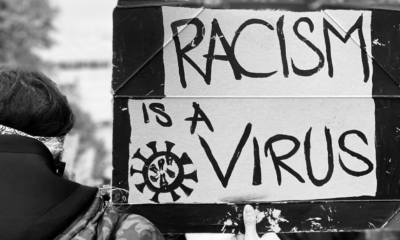
 Legal3 years ago
Legal3 years agoA Public Health Approach to Tackling Racism
-

 Legal3 years ago
Legal3 years agoA Runaway Decision? Discussing and Defending R (Plan B Earth) v Secretary of State for Transport
-

 Legal3 years ago
Legal3 years agoTrump: the most prolific execution President in over 130 years
-
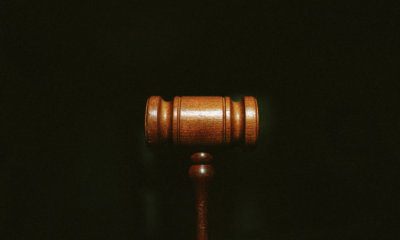
 Legal7 months ago
Legal7 months agoIs unjust enrichment really concerned with enrichments?
-

 Economic3 years ago
Economic3 years agoWhat is the Rule of Law and What Difference Does it Make?


